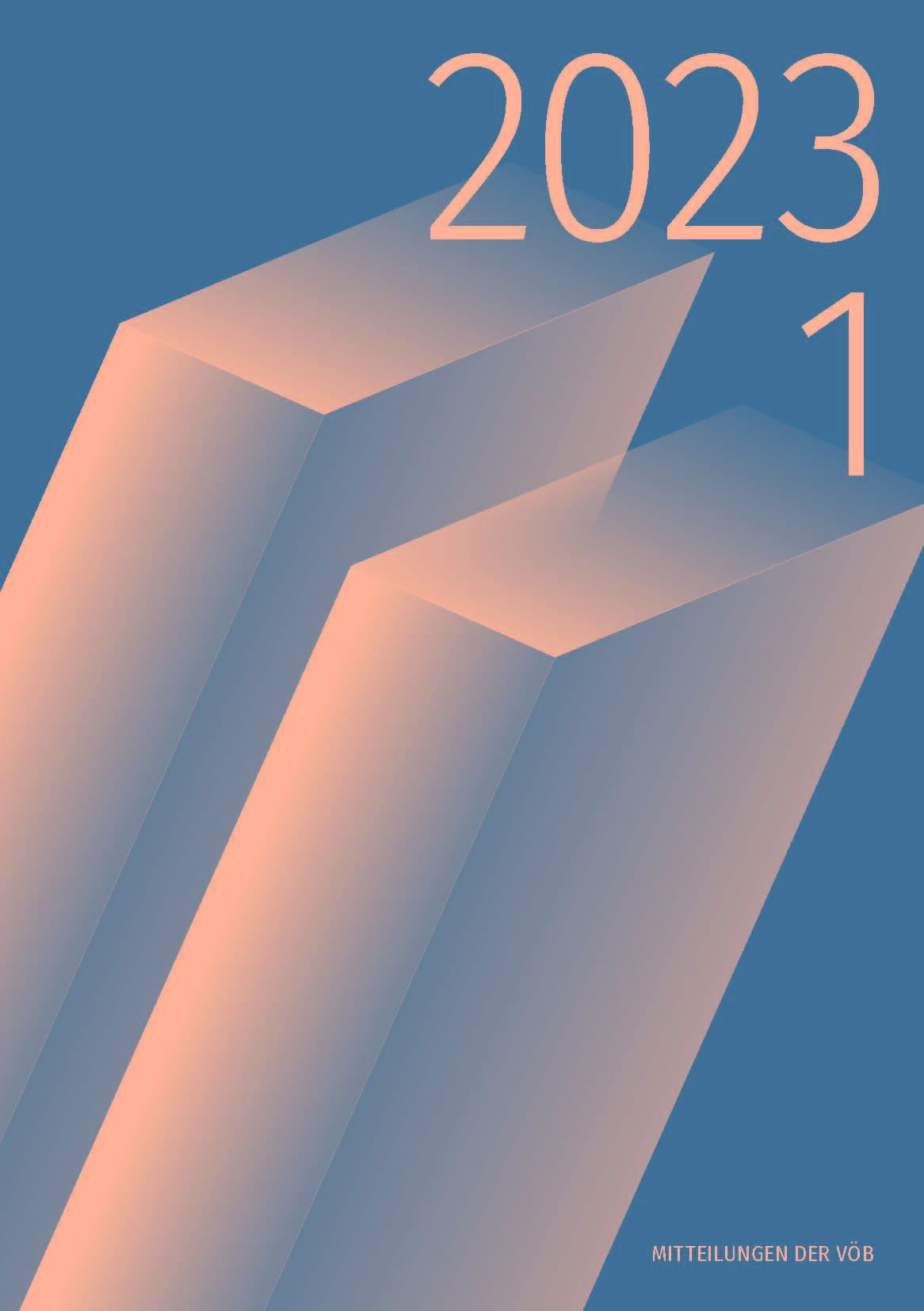Diverse needs, diverse solutions: Making library trainings accessible
DOI:
https://doi.org/10.31263/voebm.v76i1.8220Keywords:
accessibility, libraries, training, training materials, FAIR data, open scienceAbstract
Libraries as knowledge hubs serve several functions, one of them is knowledge dissemination. The trainings needed for reaching this goal require them to be fit for a diverse audience. In this article we discuss why creating accessible trainings is important, and provide guidelines and tools on how to create accessible training materials.
Downloads
References
BVG (2022), https://www.ris.bka.gv.at/GeltendeFassung.wxe?Abfrage=Bundesnormen&Gesetzesnummer=10000138 [accessed 11.01.2023].
Caldwell, B., Cooper, M., Guarino Reid, L., & Vanderheiden, G. (2008): Web Content Accessibility Guidelines (WCAG) 2.0, http://www.w3.org/TR/WCAG20/.
EOSC (n.d): EOSC. What the European Open Science Cloud is, https://eosc.eu/about-eosc.
EOSC Synergy (n.d): EOSC Synergy Online Training Handbook, Creating Inclusive Content, https://moodle.learn.eosc-synergy.eu/course/view.php?id=15§ion=20 [accessed 11.01.2023].
European Union, Directive (EU) 2016/2102 of the European Parliament and of the Council of 26 October 2016 on the accessibility of the websites and mobile applications of public sector bodies, https://eur-lex.europa.eu/eli/dir/2016/2102/oj.
Gergely, E., Jeitler, A., & Blumesberger, S. (2022): FAIRe Daten sind barrierefrei, https://hdl.handle.net/11353/10.1604426.
Glover Blackwell, A. (2017): The Curb-Cut Effect. Stanford Social Innovation Review, https://ssir.org/articles/entry/the_curb_cut_effect# [accessed 11.01.2023].
GO FAIR (n.d): FAIR Principles, https://www.go-fair.org/fair-principles/ [accessed 11.01.2023].
Jaeger, P. T. (2018): Designing for diversity and designing for disability: New opportunities for libraries to expand their support and advocacy for people with disabilities. International Journal of Information, Diversity, & Inclusion, 2(1-2), 3430. https://doi.org/10.33137/ijidi.v2i1/2.32211.
Pionke, J. J. (2020): Library employee views of disability and accessibility. Journal of Library Administration, 60(2), 120–145, https://doi.org/10.1080/01930826.2019.1704560.
Pionke, J. J. (2017): Toward holistic accessibility: Narratives from functionally diverse patrons. Reference and User Services Quarterly, 57(1), 48–56, https://doi.org/10.5860/rusq.57.1.6442.
Russell, S. E., & Huang, J. (2009): Libraries’ role in equalizing access to information. Library Management, 30(1/2), 69-76, https://doi.org/10.1108/01435120910927538.
Ryobi Systems (2020): Visolve, https://www.ryobi.co.jp/products/visolve/en/ [accessed 11.01.2023].
Shea, G., & Derry, S. (2019): Academic libraries and autism spectrum disorder: What do we know? Journal of Academic Librarianship, 45(4), 326–331, https://doi.org/10.1016/j.acalib.2019.04.007.
United Nations (2014): UN E-Government Survey 2014, https://publicadministration.un.org/egovkb/en-us/reports/un-e-government-survey-2014
Downloads
Published
How to Cite
Issue
Section
License
Copyright (c) 2023 Lisa Hirsch, Julia Geistberger

This work is licensed under a Creative Commons Attribution 4.0 International License.

Alle Inhalte dieser Zeitschrift – exkl. einzelner Logos und Abbildungen – sind lizenziert unter CC BY 4.0.










